The 2020 MLB draft was held in unique circumstances -- reduced to five rounds, conducted remotely, with spring scouting virtually nonexistent because of the coronavirus pandemic.
But in the end, the same old question must be answered: How did each team do?
Here's a team-by-team breakdown of all 30 draft classes, grouped by division.
Jump to a franchise:
American League
BAL | BOS | CHW | CLE | DET
HOU | KC | LAA | MIN | NYY
OAK | SEA | TB | TEX | TOR
National League
ARI | ATL | CHC | CIN | COL
LAD | MIA | MIL | NYM | PHI
PIT | SD | SF | STL | WSH
AL East

Baltimore Orioles
R1 (2): Heston Kjerstad, RF, Arkansas
CBA (30): Jordan Westburg, SS, Mississippi State
R2 (39): Hudson Haskin, CF, Tulane
R3 (74): Anthony Servideo, SS, Ole Miss
R4 (103): Coby Mayo, 3B, Stoneman Douglas HS (Florida)
R5 (133): Carter Baumler, RHP, Dowling Catholic HS (Iowa)
I like the strategy and execution of what Baltimore did, leaning heavily on upside bats again in the second draft under general manager Mike Elias. Westburg has plus power and 65-grade speed with a good shot to stick at shortstop and improving contact ability, while Haskin has plus speed and average raw power in a center-field profile, but a funky swing that might need an adjustment. My main quibble: If the option existed to pay a bit more for Nick Gonzales at their first pick, then take a lower-grade prospect in the fifth round than over-slot prep RHP Baumler, I probably would have preferred that. But we'll have to see the bonuses to know if that was the situation, and it might be splitting hairs even if things could have played out that way.
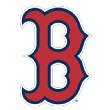
Boston Red Sox
R1 (17): Nick Yorke, 2B, Archbishop Mitty HS (California)
R3 (89): Blaze Jordan, 1B, DeSoto Central HS (Mississippi)
R4 (118): Jeremy Wu-Yelland, LHP, Hawaii
R5 (148): Shane Drohan, LHP, Florida State
The Red Sox shocked many when they took a consensus second-round talent in the first round in prep 2B Yorke. As a Northern California prospect who didn't do a lot of the summer showcase events, scouts didn't see a lot of him, and with the bat as his standout tool, Yorke is the type who looks better the more you see him. It sounds like a couple of teams had him in the comp to early-second-round area (I ranked him 69th overall, or back of the second round), and Boston didn't think he'd make it to its second pick at No. 89. I'm hearing the Red Sox saved up to $1 million below slot on that pick, and it looks like they'll spend all of it on their next pick -- prep 1B Jordan -- so they effectively traded the 17th overall pick and their mid-third-rounder for two second-round picks. Both are bat-first prospects, with Yorke having defensive value while Jordan has big raw power, but likely at first base. Fifth-rounder Drohan has a 70-grade, high-spin curveball and a fastball that gets into the mid-90s but has trouble throwing strikes.
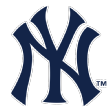
New York Yankees
R1 (28): Austin Wells, C, Arizona
R3 (99): Trevor Hauver, 2B, Arizona State
R4 (129): Beck Way, RHP, Northwest Florida State
The Yankees, with their flexible draft strategy, have done it again, even while missing two picks due to free-agent compensation. Wells fits where the game is going: hit/power/patience are kind, and catcher might not need to be a very defense-oriented position in an automatic-strike-calling world. With the payroll and club they have, the Bombers can afford to shoot high for bats and arms that could play on a playoff club, and Wells and third-round pick Hauver both have 50-plus hit/power tools that could find a way into a good lineup. I don't know the full story, but Way (three 55-grade pitches, projection juco arm) was believed to have a seven-figure price tag. I'm not sure how the Yankees could have more than $1 million saved for their last pick, but it would appear they have an understanding on Way's price.

Tampa Bay Rays
R1 (24): Nick Bitsko, RHP, Central Bucks East HS (Pennsylvania)
CBA (37): Alika Williams, SS, Arizona State
R2 (57): Ian Seymour, LHP, Virginia Tech
R3 (96): Hunter Barnhart, RHP, St. Joseph HS (California)
R4 (125): Tanner Murray, SS, UC Davis
R5 (155): Jeff Hakanson, RHP, Central Florida
The Rays are considered the best-run organization in baseball for many reasons, and one of them is a flexible, fearless approach to the draft. Taking Bitsko with their first pick exemplifies that strategy, and if he busts, the Rays will be able to absorb it with the best farm system in the game. Seymour fits the type of crafty, multi-role lefty they've acquired in the past (John Doxakis, Michael Plassmeyer, Ryan Yarbrough). Barnhart probably would have gone in the second round with a full spring, but his late velo bump meant only the teams all over him felt comfortable meeting his price.
Meet Nick Bitsko: A man of mystery with freakish upside

Toronto Blue Jays
R1 (5): Austin Martin, 3B, Vanderbilt
R2 (42): C.J. Van Eyk, RHP, Florida State
R3 (77): Trent Palmer, RHP, Jacksonville
R4 (106): Nick Frasso, RHP, Loyola Marymount
R5 (136): Zach Britton, LF, Louisville
The Jays made the best value pick in the draft, taking my second-best prospect -- Austin Martin -- at No. 5. After that, the stakes get much lower, but RHP Van Eyk was a nice upside college value pick at No. 42. The Jays' last three picks also fit solid values: a pitchability arrow-up guy in RHP Palmer, a lanky potential starter with stuff in RHP Frasso and a nice bat with some pop in LF Britton.
AL Central

Cleveland Indians
R1 (23): Carson Tucker, SS, Mountain Pointe HS (Arizona)
CBA (36): Tanner Burns, RHP, Auburn
R2 (56): Logan Allen, LHP, Florida International
R3 (95): Petey Halpin, OF, Mira Costa HS (California)
R4 (124): Milan Tolentino, Santa Margarita HS (California)
R5 (154): Mason Hickman, RHP, Vanderbilt
There was buzz that Cleveland almost drafted RHP Cole Wilcox at No. 23, which would have been full slot to a little above, but opted at the last minute for prep SS Tucker, which I'm hearing is a good bit below slot. Burns' medical outlook had some clubs worried, so he might also be a bit below slot with Cleveland's second pick, but his stuff/command combo fits in the first day on talent and track record. LHP Allen is a solid value (and whose name is a hilarious coincidence with another lefty named Logan Allen already in the system) in the second round, then it would appear that CF Halpin and SS Tolentino are the over-slot options the early savings were spent on. I had heard Halpin's number was formidable enough that he was likely headed to the Longhorns, and Tolentino was a good bet to head to UCLA; I had Halpin in the second round on talent, and Tolentino in the third or fourth, but he fits Cleveland's type of hit-first middle infielders. Hickman is a high-performing, Vanderbilt starter with TrackMan-friendly characteristics but just average raw stuff.
Check out highlights of Tennessee left-handed pitcher Garrett Crochet, selected 11th overall by the White Sox.
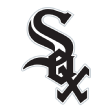
Chicago White Sox
R1 (11): Garrett Crochet, LHP, Tennessee
R2 (47): Jared Kelley, RHP, Refugio HS (Texas)
R3 (83): Adisyn Coffey, RHP, Wabash Valley College (Illinois)
R4 (112): Kade Mechals, RHP, Grand Canyon
R5 (142): Bailey Horn, LHP, Auburn
The White Sox took all pitchers, and their preference clearly was power arms. Lefty Crochet has some clear Chris Sale and Madison Bumgarner elements with electric stuff from a low slot, though some scouts think he's more like Josh Hader and that he'll end up in relief. Either way, keep an eye on Crochet taking the Sale path, in which he is rushed to the big leagues in a relief role before settling in as a starter. Kelley is the best performing prep power arm in the draft class but slid because his type (changeup over slider, maxed-out frame, mediocre fastball characteristics) isn't en vogue right now. Coffey is a juco conversion arm who is in the mid-90s with a power breaker, and Horn is 22 with Tommy John surgery in his past but is up to 96 mph and has an above-average breaker with strong TrackMan characteristics.

Detroit Tigers
R1 (1): Spencer Torkelson, 1B, Arizona State
R2 (38): Dillon Dingler, C, Ohio State
CBB (62): Daniel Cabrera, OF, LSU
R3 (73): Trei Cruz, SS, Rice
R4 (102): Gage Workman, 3B Arizona State
R5 (132): Colt Keith, 3B, Biloxi HS (Mississippi)
Hard to give a bad review to the team that gets the top player in the draft in 1B Torkelson, along with the top player available on Day 2 in C Dingler. The Tigers went heavy on bats, which is both the safest sort of prospect to take and what Detroit's system really needed. Third baseman Keith was an interesting over-slot option as a third-round talent in the fifth round, and 3B Workman has late first-round tools but no track record of performing close to them, so he'll be a solid developmental prospect. SS Cruz and LF Cabrera are the more role-player, modest-upside-type picks you'd expect from a college-bat-heavy draft.

Kansas City Royals
R1 (4): Asa Lacy, LHP, Texas A&M
CBA (32): Nick Loftin, SS, Baylor
R2 (41): Ben Hernandez, RHP, De La Salle Institute (Illinois)
R3 (76): Tyler Gentry, RF, Alabama
R4 (105): Christian Chamberlain, LHP, Oregon State
R5 (135): Will Klein, RHP, Eastern Illinois
Lacy, the Royals' second-ranked player (and my third-ranked player), fell into their laps at the fourth overall pick, then another talent expected to go higher, SS Loftin, slid to their second pick, where it sounds like he'll get an above-slot bonus. RHP Hernandez was a second- to third-round talent, a prep arm up to 95 mph with a plus changeup. RF Gentry, LHP Chamberlain and RHP Klein all fit in the third and fourth rounds, making the Royals another favorite class in the industry with solid value up and down the board.

Minnesota Twins
R1 (27): Aaron Sabato, 1B, North Carolina
R2 (59): Alerick Soularie, OF, Tennessee
R4 (128): Marco Raya, RHP, United South HS (Texas)
R5 (158): Kala'i Rosario, OF, Waiakea HS (Hawaii)
Sabato was in play in the middle of the first round, but the late first is a more reasonable spot for his talent, which for me was pretty one-dimensional -- although that one dimension is huge raw power with big exit velos. Second-rounder LF Soularie is another power-forward bat, as is prep LF Rosario, still just 17 on draft day. Fourth-rounder RHP Raya is a smaller-framed power arm with a solid slider.
AL West

Houston Astros
2C (72): Alex Santos II, RHP, Mt. St. Michael Academy (New York)
R3 (101): Tyler Brown, RHP, Vanderbilt
R4 (131): Zach Daniels, OF, Tennessee
R5 (160): Shay Whitcomb, SS, UC San Diego
Houston had its first- and second-round picks taken away in the sign-stealing scandal but did nicely collecting big tools later in the draft. Prep RHP Santos has huge spin rates, a good fastball/curve combo and projection, but he still has a way to go. RHP Brown also is a spin-rate monster who closed for Vanderbilt, but many think he can convert to starting, similar to Yankees RHP Chance Adams. RF Daniels has big raw power and might be able to play some center field but has contact issues and a short track record. Third baseman Whitcomb has some tools and had a nice season on the Cape, so he could be a nice mid-major find in the fifth round.
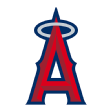
Los Angeles Angels
R1 (10): Reid Detmers, LHP, Louisville
R3 (82): David Calabrese, CF, St. Elizabeth HS (Ontario, Canada)
R4 (111): Werner Blakely, SS, Detroit Edison HS (Michigan)
R5 (141): Adam Seminaris, LHP, Long Beach State
Despite pre-draft rumors that the Angels would be punting picks in a high-profile fashion, they played it pretty straight. The chatter had them leaning college with their first pick, and LHP Detmers will likely be the first starter in this draft to stick in the big leagues. CF Calabrese was a model darling as a hit-first, 17-on-draft-day, Canadian speedster. SS Blakely is a strong projection bet with whip to his swing and infield hands. Seminaris is a below-slot pitchability lefty with some funk.
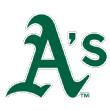
Oakland Athletics
R1 (26): Tyler Soderstrom, C, Turlock HS (California)
R2 (58): Jeff Criswell, RHP, Michigan
R3 (98): Michael Guldberg, OF, Georgia Tech
R4 (127): Dane Acker, RHP, Oklahoma
R5 (157): Stevie Emanuels, RHP, Washington
Oakland made a nice move scooping up prep C Soderstrom for an over-slot bonus with their first-round pick; he had no business slipping that far based solely on talent. I would guess third-round pick LF Guldberg, a bat-first type with lighter tools, is far enough below slot to cover most or all of that bonus. Criswell is a big righty with power stuff but might fit best in relief, while RHP Acker has solid average stuff and surprising pitchability, a potential back-of-the-rotation type. RHP Emanuels looked like a second- or third-rounder on the Cape, but his stuff backed up this spring, so he's a nice gamble.

Seattle Mariners
R1 (6): Emerson Hancock, RHP, Georgia
R2 (43): Zach DeLoach, CF, Texas A&M
CBB: Connor Phillips, RHP, McLennan CC (Texas)
R3 (78): Kaden Polcovich, 2B, Oklahoma State
R4 (107): Tyler Keenan, 3B, Ole Miss
R5 (137): Taylor Dollard, RHP, Cal Poly
Hancock was a potential candidate to go No. 1 overall with a strong spring, but he came out of the gates slowly, and then the shutdown happened. RF DeLoach is a tweener with a hit/power combo that materialized only on the Cape and against weak competition in the spring, but he seems to be trending up with his summer adjustments. RHP Phillips is a power arm who is trending more to relief, while 2B Polcovich is another summer/early-spring riser who is hit-first. Keenan might not stick at third base long term, but he has easy, plus pop and surprising feel to hit.
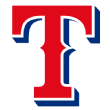
Texas Rangers
R1 (14): Justin Foscue, 2B, Mississippi State
R2 (50): Evan Carter, OF, Elizabethtown HS (Tennessee)
R3 (86): Tekoah Roby, RHP, Pine Forest HS (Florida)
R4 (115): Dylan MacLean, LHP, Central Catholic HS (Oregon)
R5 (145): Thomas Saggese, SS, Carlsbad HS (California)
There was a lot of interest in Foscue behind Texas' pick, but it sounds like he will sign for a good bit below slot here; he has a premium hit/power/positional value combination. RF Carter was the surprise pick of Day 2 in that I had never heard of him, but from checking with scouts, he sounded like exactly the type I would have heard about with one more month of spring ball: He showed flashes of some above-average tools, but not enough track record to be up here on consensus. The swing, body and tools are all above average upon further investigation. RHP Roby had some late-second-round buzz as a TrackMan-friendly prep arm with a velo bump this spring. LHP MacLean is a projection case, and SS Saggese was another spring pop-up guy with a surprising hit/power package but a very short history.
NL East

Atlanta Braves
R1 (25): Jared Shuster, LHP, Wake Forest
R3 (97): Jesse Franklin V, CF, Michigan
R4 (126): Spencer Strider, RHP, Clemson
R5 (156): Bryce Elder, RHP, Texas
It sounds as if the Braves went a good bit under slot with Shuster in the first round, taking their strategy from last year of selecting the cheapest of the players they had in their mix based on talent. His low-90s heater ticked up in the summer/spring, and his plus changeup is a separator. LF Franklin is a power-over-hit tweener who is a nice developmental prospect, while RHP Strider is a smaller-framed, athletic, power arm coming off Tommy John surgery. RHP Elder wasn't the most TrackMan-friendly arm in the draft, but his sinker/slider combo and starter traits made him a solid value in the fifth round.
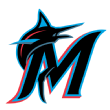
Miami Marlins
R1 (3): Max Meyer, RHP, Minnesota
R2 (40): Dax Fulton, LHP, Mustang HS (Oklahoma)
CBB (61): Kyle Nicolas, RHP, Ball State
R3 (75): Zach McCambley, RHP, Coastal Carolina
R4 (104): Jake Eder, LHP, Vanderbilt
R5 (134): Kyle Hurt, RHP, USC
The Fish went with all arms in this draft and drew universal praise in the industry for their haul. No one was expecting they would go with RHP Meyer with their first pick at No. 3, but he was going to go by No. 5, and it sounds like they were able to cut some money. There's a shot Meyer could rush to the big leagues in relief, then shift to the rotation, as the White Sox might do with Crochet. LHP Fulton would have gone in the middle of the first round if not for having Tommy John surgery this fall, so he was a nice place to park the Meyer savings. RHP Nicolas (up to 100 mph, potential plus slider), RHP McCambley (TrackMan-friendly, 55-grade heater and curve might be 60 grade in relief), LHP Eder (up to 97 mph, solid breaker, lost plus changeup while used in relief) and RHP Hurt (22 years old, mid-90s, three above-average pitches, relief look) all might fit best in relief, but they bring big stuff and could move quickly.
Check out highlights of Pete Crow-Armstrong, an outfielder from Harvard Westlake High School in California drafted 19th overall by the Mets.

New York Mets
R1 (19): Pete Crow-Armstrong, CF, Harvard-Westlake HS (California)
R2 (52): J.T. Ginn, RHP, Mississippi State
2C (69): Isaiah Greene, CF, Corona HS (California)
R3 (91): Anthony Walters, SS, San Diego State
R4 (120): Matthew Dyer, C, Arizona
R5 (150): Eric Orze, RHP, New Orleans
It's not necessarily an upside-only approach, but the Mets are aggressive in terms of how they move money around and get the top-end talent they like, which they did for the second draft under GM Brodie Van Wagenen. CF Crow-Armstrong is one of the safest prep players in the class, with a long track record of contact and defense and emerging gap power. RHP Ginn was a tough guy to place in the mock draft with the sort of money he wanted, rumored to be the amount he turned down out of high school; he would have gotten much more than that if he didn't have elbow surgery earlier this year, likely in the middle of the first round. Prep CF Greene is another contact-and-speed type with a shorter track record, followed by three under-slot signees to create savings to sign Ginn.

Philadelphia Phillies
R1 (15): Mick Abel, RHP, Jesuit HS (Oregon)
R3 (87): Casey Martin, SS, Arkansas
R4 (116): Carson Ragsdale, RHP, South Florida
R5 (146): Baron Radcliff, OF, Georgia Tech
The Phillies were tied to upside arms with their first pick and took maybe the highest upside arm in the draft in prep RHP Abel. He flashes three plus pitches and checks all the boxes; it's just a risky demographic, and no one saw him pitch in person this spring. I'm the low guy on SS Martin, but the raw tools -- 80 speed, will play up the middle, solid average raw power -- are outrageous for a college player from the SEC taken in the third round. RHP Ragsdale is another upside play, a 22-year-old, 6-foot-8 righty with Tommy John history but an upper-90s heater and a solid average slider that likely fits in relief. RF Radcliff might have the most raw power in the whole draft, with the top single exit velo and longest ball hit in the draft class, per TrackMan.
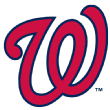
Washington Nationals
R1 (22): Cade Cavalli, RHP, Oklahoma
R2 (55): Cole Henry, RHP, LSU
2C (71): Sammy Infante, SS, Msgr. Edward Pace HS (Florida)
R3 (94): Holden Powell, RHP, UCLA
R4 (123): Brady Lindsly, C, Oklahoma
R5 (153): Mitchell Parker, LHP, San Jacinto College North (Texas)
The Nats are now one of the few clubs in the "draft upside as often as possible" camp, and they did it again this year. The way they get upside lower in the draft is often by drafting pitchers with big stuff that projects to relief or players who were injured or aren't very polished. This year, they took RHP Cavalli (huge stuff, great body/delivery, limited innings, just OK command, not too polished), RHP Henry (first-round stuff, improved command, injuries, inconsistent arm speed) and SS Infante (big bat speed, raw pop, solid summer performance but not a shortstop, and 19 on draft day). RHP Powell is a nice undersized relief arm with above-average stuff and LHP Parker is a potential starter who flashes above-average stuff as well.
NL Central
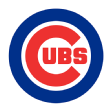
Chicago Cubs
R1 (16): Ed Howard, SS, Mount Carmel HS (Illinois)
R2 (51): Burl Carraway, LHP, Dallas Baptist HS (Texas)
R3 (88): Jordan Nwogu, OF, Michigan
R4 (117): Luke Little, LHP, San Jacinto College North (Texas)
R5 (147): Koen Moreno, RHP, Panther Creek HS (North Carolina)
The Cubs were another club with a draft class that drew industrywide praise. SS Howard is a solid value with big upside and could have gone a good bit ahead of 16th overall with a strong spring. LHP Carraway will be in the big leagues quickly as a ready-made, one-inning lefty with a 70 fastball and 60 curveball. LF Nwogu needs some refinement but has big raw power, while LHP Little is huge and hits 100-plus but needs more refinement. RHP Moreno is a prototypical-projection prep righty with solid average now stuff.

Cincinnati Reds
R1 (12): Austin Hendrick, OF, West Allegheny HS (Pennsylvania)
R2 (48): Christian Roa, RHP, Texas A&M
CBB (65): Jackson Miller, C, J.W. Mitchell HS (Florida)
R3 (84): Bryce Bonnin, RHP, Texas Tech
R4 (113): MacKenzie Wainwright, RF, St. Edward HS (Ohio)
R5 (143): Joe Boyle, RHP, Notre Dame
The Reds like power bats and arms and continued that trend in this draft. RF Hendrick was their first pick and was probably the best combo of bat speed and raw power in the whole prep class. RF Wainwright is raw but flashed great power metrics in a short scouting look. RHPs Bonnin (sits mid-90s as a starter) and Boyle (up to 101 in relief) have big arms but command and consistency issues. RHP Roa was a pure power arm entering the year, then developed a better changeup and command as the No. 2 starter behind Asa Lacy at Texas A&M. C Miller is one of the better bats in the prep class, with average raw power and a shot to stick behind the plate.

Milwaukee Brewers
R1 (20): Garrett Mitchell, CF, UCLA
R2 (53): Freddy Zamora, SS, Miami
R3 (92): Zavier Warren, C, Central Michigan
R4 (121): Joey Wiemer, OF, Cincinnati
R5 (151): Hayden Cantrelle, SS, Louisiana Lafayette
The Brewers tend to prioritize players with a couple of standout characteristics and took five such position players this year. CF Mitchell is a 70 runner with 55 raw power and a history of making contact, but scouts question how much he has improved and gotten closer to reaching his considerable ceiling, with Type 1 diabetes another complicating factor. SS Zamora had late first-round buzz before a suspension and torn ACL that came in the weeks before the season started. C Warren has position versatility and some clubs eyed his advanced contact skills and solid athleticism for a catcher conversion in pro ball. RF Wiemer hasn't really performed much but has above-average speed and power with a Hunter Pence-like profile. Second baseman Cantrelle is a Ryan Freel-type, spark-plug utility player; I Freel pretty good about that comp.

Pittsburgh Pirates
R1 (7): Nick Gonzales, 2B, New Mexico State
CBA (31): Carmen Mlodzinski, RHP, South Carolina
R2 (44): Jared Jones, RHP, La Mirada HS (California)
R3 (79): Nick Garcia, RHP, Chapman University (California)
R4 (108): Jack Hartman, RHP, Appalachian State
R5 (138): Logan Hofmann, RHP, Northwestern State
Pittsburgh's first four picks all are upside plays in that none of them have shown the same look at the same level of competition for multiple years, as lots of college picks in this draft have. Gonzales is a top-10 pick because of his performance on the Cape, which was just 42 games. Mlodzinski has made just 14 starts over the past two years (Cape and spring at South Carolina), due in large part to a broken foot in 2019, but also the pandemic. He was a solid mid-to-late first-round prospect on talent, but the shorter track record and sinker/slider-based arsenal made some clubs pause. Jones has had huge stuff and command issues for years but raised his arm slot this spring and might now fit a little better into today's game. Garcia is a conversion popup arm at a Division III school who could be a setup reliever or back-end starter.

St. Louis Cardinals
R1 (21): Jordan Walker, 3B, Decatur HS (Georgia)
R2 (54): Masyn Winn, SS/RHP, Kingwood HS (Texas)
CBB (63): Tink Hence, RHP, Watson Chapel HS (Arkansas)
2C (70): Alec Burleson, RF/LHP, East Carolina
R3 (93): Levi Prater, LHP, Oklahoma
R4 (122): Ian Bedell, RHP, Missouri
R5 (152): J.L. Jones IV, 1B, Long Beach State
The Cards went with three upside prep types in their first three picks. Third baseman Walker has big raw power and was solid over the summer, but contact and where he fits in the field are still somewhat questionable at this point. SS/RHP Winn has electric tools but is still a bit raw at the plate, along with having two 70-grade pitches in a relief-type look on the mound. He will very likely play both ways in pro ball, but as a primary shortstop who pitches once or twice a week for short stretches. RHP Hence had late helium this spring but wasn't seen widely; he was up to 96 mph with a potential 55-grade breaker this summer with a loose arm, but he's 6-foot-1 and needs to add bulk. Burleson was a two-way player for East Carolina but could turn into a low-end, every-day right fielder with more focus on his offensive game. LHP Prater is a fastball/changeup type who might end up in the bullpen, and RHP Bedell looked like a second-rounder on the Cape but had lighter stuff this spring.
NL West
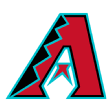
Arizona Diamondbacks
R1 (18): Bryce Jarvis, RHP, Duke
CBA (33): Slade Cecconi, RHP, Miami
R3 (90): Liam Norris, LHP, Green Hope HS (North Carolina)
R4 (119): A.J. Vukovich, 3B, East Troy HS (Wisconsin)
R5 (149): Brandon Pfaadt, RHP, Bellarmine
Jarvis was a popular pick late in the first round who figures to be a below-slot signing. The 22-year-old's stuff ticked up significantly this fall/spring, with him flashing four pitches and command that is a 55- or 60-grade. RHP Cecconi also fits the D-backs' favored type of pitcher, with a higher arm slot and spin rates in a power four-seam/slider package. LHP Norris is along those lines, with a curveball. 1B Vukovich is very likely a seven-figure over-slot signing who could absorb the Jarvis savings; he's a deceptively good athlete (top-10 all time in Wisconsin prep hoops scoring) who has a shot at all four corners, with plus raw power.
Check out highlights of Spruce Creek High School outfielder Zac Veen, selected ninth overall by the Rockies.

Colorado Rockies
R1 (9): Zac Veen, CF, Spruce Creek HS (Florida)
CBA (35): Drew Romo, C, The Woodlands HS (Texas)
R2 (46): Chris McMahon, RHP, Miami
R3 (81): Sam Weatherly, LHP, Clemson
R4 (110): Case Williams, RHP, Douglas County HS (Colorado)
R5 (140): Jack Blomgren, SS, Michigan
RF Veen was the top prep prospect in the draft, and I don't really understand why he lasted until the ninth pick; with Coors Field as his home park, he could hit 50 homers one day. C Romo is a premium catch-and-throw prospect with tools to hit, but the timing isn't consistently there yet. RHP McMahon checks a lot of boxes, with a sinker up to 97 mph and three above-average pitches. LHP Weatherly was lights-out stuff-wise this spring, with a plus fastball/slider combo, but his command is still below average. SS Blomgren is a generic, contact-first utility type, and RHP Williams flashed mid-90s velocity and a sharp breaker last summer.
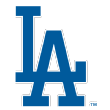
Los Angeles Dodgers
R1 (29): Bobby Miller, RHP, Louisville
R2 (60): Landon Knack, RHP, East Tennessee State
CBB (66): Clayton Beeter, RHP, Texas Tech
R3 (100): Jake Vogel, OF, Huntington Beach HS (California)
R4 (130): Carson Taylor, C, Virginia Tech
R5 (159): Gavin Stone, RHP, Central Arkansas
Miller might not have the arm action or slider to be a 200-inning, midrotation starter, but he's aggressive and sits 95-99 mph for 100 pitches and can throw a 55-grade slider over the plate, so the Dodgers will tinker with this raw talent and find a role for him. RHP Knack turns 23 next month, but he made a jump this spring, with a 92-98 mph heater to go with solid command and an average-ish mix of off-speed pitches. RHP Beeter, for some, has the best raw stuff in the draft, but he has a Tommy John surgery in his past and almost no track record of throwing strikes, with the stuff spiking recently; some teams think he'll put it all together soon and are very optimistic. CF Vogel is an 80 runner with a contact-heavy approach who is another nice ball of clay for development. C Taylor is a switch-hitter with some offensive upside who is good enough to stick behind the plate.

San Diego Padres
R1 (8): Robert Hassell, CF, Independence HS (Tennessee)
CBA (34): Justin Lange, RHP, Llano HS (Texas)
R2 (45): Owen Caissie, OF, Notre Dame Catholic HS (Ontario, Canada)
R3 (80): Cole Wilcox, RHP, Georgia
R4 (109): Levi Thomas, RHP, Troy
R5 (139): Jagger Haynes, LHP, West Columbus HS (North Carolina)
San Diego has another industry-consensus top class, showing the trademark strong opinions and aggression of the Padres. CF Hassell was a near toss-up with Zac Veen for top prep player in the country, and RHP Lange was the quickest-rising prep arm, hitting 100 mph out of nowhere this spring. LF Caissie is a likely below-slot, later-blooming Canadian with strong hit/power combo. RHP Wilcox is the crux of the class, a consensus top-25 overall talent who might be a top-10 overall talent in this class with a little better development but could be a tough sign. LHP Haynes is an interesting, late-rising, four-seam/changeup, TrackMan-friendly project.
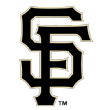
San Francisco Giants
R1 (13): Patrick Bailey, C, NC State
R2 (49): Casey Schmitt, 3B, San Diego State
2C (67): Nick Swiney, LHP, NC State
2C (68): Jimmy Glowenke, SS, Dallas Baptist (Texas)
R3 (85): Kyle Harrison, LHP, De La Salle HS (California)
R4 (114): R.J. Dabovich, RHP, Arizona State
R5 (144): Ryan Murphy, RHP, Le Moyne
San Francisco leaned more toward polish and college types this year, with a nice bulk of talent, thanks to two second-round comp picks. C Bailey has a good shot to be one of the top 15 catchers in the big leagues at some point, with a power-focused approach, above-average defense and makeup. 3B Schmitt was in the mid-90s as a reliever at San Diego State but fits better as a hit-first, above-average defender with a shot for 15-20 homers and a 70 arm. LHP Swiney has a fringy fastball but a solid average breaker, plus changeup and some funk, but he doesn't have the longest track record. SS Glowenke probably fits best long term at second base and has some raw power and contact skills. RHP Dabovich has solid average stuff, but he also worked 95-97, touching 99 mph in a new role this spring as a reliever. LHP Harrison is a lower-slot, pitchability prep lefty with a solid average three-pitch mix and deception, but he is mostly maxed out physically.
